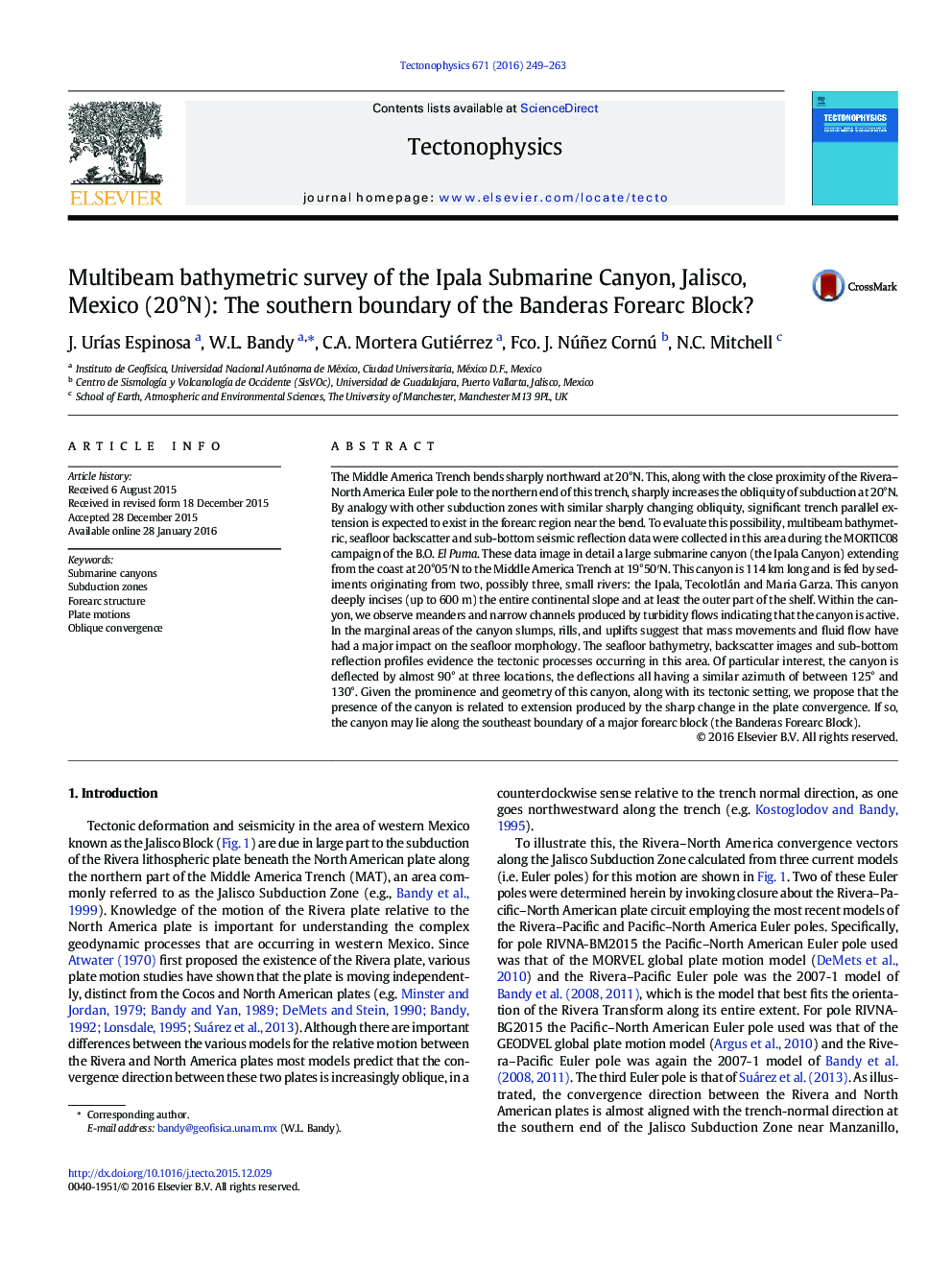| کد مقاله | کد نشریه | سال انتشار | مقاله انگلیسی | نسخه تمام متن |
|---|---|---|---|---|
| 4691337 | 1636725 | 2016 | 15 صفحه PDF | دانلود رایگان |

• Multibeam data reveals the morphology of a previously unrecognized submarine canyon in the continental slope of Jalisco.
• The canyon is 114 km long, up to 600 m deep and shows three 90° deflections of its course.
• The deflections are aligned with the NW striking nodal plane of the 20 March 2010, Mw 5.0 EQ.
• It is proposed that the canyon follows a tectonic boundary between two major forearc blocks.
The Middle America Trench bends sharply northward at 20°N. This, along with the close proximity of the Rivera–North America Euler pole to the northern end of this trench, sharply increases the obliquity of subduction at 20°N. By analogy with other subduction zones with similar sharply changing obliquity, significant trench parallel extension is expected to exist in the forearc region near the bend. To evaluate this possibility, multibeam bathymetric, seafloor backscatter and sub-bottom seismic reflection data were collected in this area during the MORTIC08 campaign of the B.O. El Puma. These data image in detail a large submarine canyon (the Ipala Canyon) extending from the coast at 20°05′N to the Middle America Trench at 19°50′N. This canyon is 114 km long and is fed by sediments originating from two, possibly three, small rivers: the Ipala, Tecolotlán and Maria Garza. This canyon deeply incises (up to 600 m) the entire continental slope and at least the outer part of the shelf. Within the canyon, we observe meanders and narrow channels produced by turbidity flows indicating that the canyon is active. In the marginal areas of the canyon slumps, rills, and uplifts suggest that mass movements and fluid flow have had a major impact on the seafloor morphology. The seafloor bathymetry, backscatter images and sub-bottom reflection profiles evidence the tectonic processes occurring in this area. Of particular interest, the canyon is deflected by almost 90° at three locations, the deflections all having a similar azimuth of between 125° and 130°. Given the prominence and geometry of this canyon, along with its tectonic setting, we propose that the presence of the canyon is related to extension produced by the sharp change in the plate convergence. If so, the canyon may lie along the southeast boundary of a major forearc block (the Banderas Forearc Block).
Journal: Tectonophysics - Volume 671, 7 March 2016, Pages 249–263